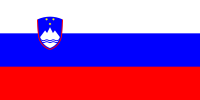
Photo from wikipedia
Abstract. Over the past years, novel parameter regionalisation techniques have been developed to predict streamflow in data-scarce regions. In this paper, we examined how the choice of gridded daily precipitation… Click to show full abstract
Abstract. Over the past years, novel parameter regionalisation techniques have been developed to predict streamflow in data-scarce regions. In this paper, we examined how the choice of gridded daily precipitation (P) products affects individual catchment calibration and verification, as well as the relative performance of three well-known regionalisation techniques (spatial proximity, feature similarity, and parameter regression) over 100 near-natural catchments with diverse hydrological regimes across Chile. We configured and calibrated a conceptual semi-distributed HBV-like hydrological model for each catchment, using four P products (ERA5, MSWEPv2.8, RF-MEPv2, and CR2MET), and two objective functions. The three regionalisation techniques were applied and evaluated for each combination of P product and objective function, using a leave-one-out cross-validation procedure. Despite differences in the spatio-temporal distribution of P quantities, all P products provided good performance during calibration (median KGE's > 0.77), two independent verification periods (median KGE's > 0.70 and 0.61, for near normal and dry conditions, respectively), and regionalisation results (with median KGE's for the best method ranging from 0.56 to 0.63). Our results suggest that model calibration is able to compensate, to some extent, differences between forcing datasets, and that the spatial resolution of P products does not substantially affect the regionalisation performance. Overall, feature similarity provided the best results, followed closely by spatial proximity, while parameter regression performed the worst, thus reinforcing the importance of transferring complete parameter sets to ungauged catchments. Our results suggest that: i) merging P products and ground-based measurements does not necessarily translate into an improved hydrological modelling performance; ii) a P product that provides the best individual model performance during calibration and verification does not necessarily provide the best performance in terms of parameter regionalisation; and iii) the hydrological regime affects the performance of regionalisation methods, with rain-dominated catchments with a snow component performing the best over Chile for spatial proximity and feature similarity.
Journal Title: Hydrology and Earth System Sciences Discussions
Year Published: 2021
Link to full text (if available)
Share on Social Media: Sign Up to like & get
recommendations!